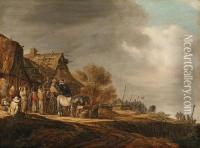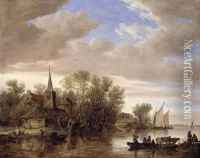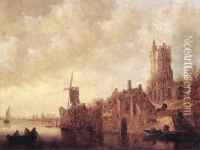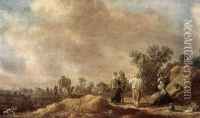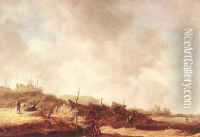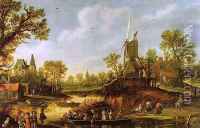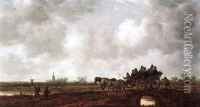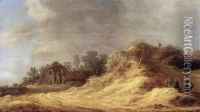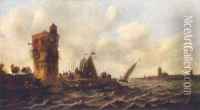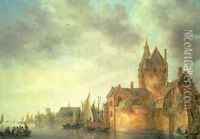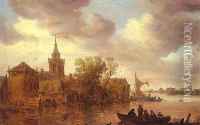Jan van Goyen Paintings
Jan van Goyen was a Dutch landscape painter from the Golden Age of Dutch painting. Born on January 13, 1596, in Leiden, Netherlands, van Goyen started learning painting at the age of ten. His early training included time with local Leiden painters, after which he spent several years traveling and studying with various artists across the Netherlands, including Esaias van de Velde in Haarlem, who greatly influenced his style.
Van Goyen settled in The Hague in 1632 and became a master in the painters' guild. He was primarily known for his tonal landscapes, which exemplified the shift from the detailed Mannerist tradition to a more atmospheric depiction of nature that characterized Dutch landscape painting in the 17th century. His work often featured expansive Dutch skies, rivers, and rural scenes, depicted with a limited palette dominated by shades of brown and grey, which was a stark contrast to the vibrant colors used by many of his contemporaries.
Despite his innovative approach to landscape painting, van Goyen struggled financially throughout his life, in part because he produced a large volume of works which he often sold for low prices. In addition to painting, he also dealt in art and tulips, the latter being a speculative market that experienced a famous crash in 1637 known as 'Tulip Mania'.
Van Goyen's influence on Dutch landscape painting was significant, and he taught several students who would go on to become prominent painters, including his son-in-law Jan Steen. His works became more valued posthumously, and today he is regarded as one of the pivotal figures in the development of naturalistic landscape art. Jan van Goyen passed away on April 27, 1656, in The Hague. His legacy is preserved in many major museums around the world, where his serene and harmonious landscapes continue to be admired.

